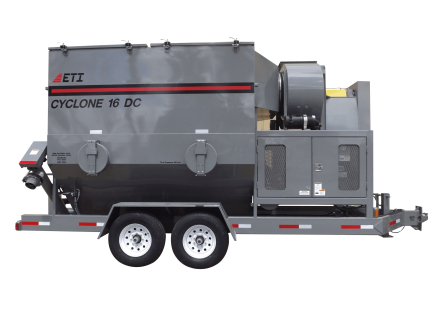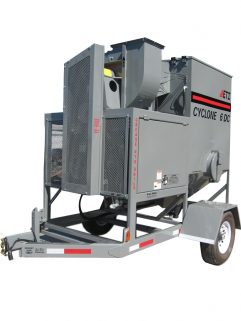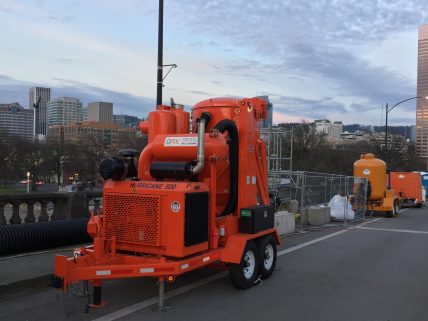Dust Collection came about during the Industrial Revolution in the late 1800s. With the explosion of manufacturing and the oil industry in the US. came an increase in waste. Sawdust, coal dust, minerals and metallics, and chemical particulates filled the air. This was a serious issue as many of these mills and factories were close to communities, and citizen death rates were rising dramatically. Because of this industrial waste boom, new industries sprung up in support of these titans: one such being dust collectors.
The First Dust Collector
The very first inventor of the dust collector is up for debate. Some say it was Wilhelm Beth, as his design included a filter. Others say it was John Finch with his cyclone. We lean towards John Finch, owner of The Knickerbocker Company, and his invention of the Cyclone Dust Collector in 1885. By 1900, cyclones were widely used and had become a staple in US factories. Cyclones were hands down the best dust collectors on the market until the early 1920s. The cyclone was great for coarse dust collection, down to around 20 microns, and is still in use today! Cyclone dust collectors operate via centrifugal force. Dusty air enters the inlet and rapidly forms a mini cyclone. The subsequent vortex within the dust collection chamber separates dust particulate from the air stream by throwing it toward the outer housing walls, where it falls into a collector. Filtered gas and fine particles then exit via the internal vortex tube.
The Shaker Dust Collector
The next big thing in dust collection came about in the mid-1920s. A fabric filter dust collector was patented in Germany, known as a Shaker Dust Collector, by Wilhelm Beth. Wilhelm is known as the father of the dust collector. A Shaker Dust Collector is a bag house unit, where the bag house is connected by ductwork to a small number of machines where sawdust or similar materials are collected. Filter elements are automatically cleaned, usually employing a small vibrating motor connected to the structural frame, which shakes the free end of the bags. This shaking action provides enough force to dislodge the buildup of dust from the filter bags.
Over the years, the Shaker Dust Collector design was improved, with better filters that caught even smaller particulate while allowing greater airflow and were made more efficient. Shaker Dust Collectors are still used today, but due to their relatively low air-to-cloth ratio and overall footprint, making space requirements relatively high, they are no longer the most popular dust collector.
Cartridge Dust Collector
The next evolution of the dust collector was in the early 1970s when the first cartridge collector was developed. A cartridge collector took a bag house filter and replaced the fabric with a cartridge media. The main advantage was the filtration was much finer than the standard bag house. Efficient down to .3 microns, which is fine enough to filter fumes out of the air. Torit produced the first cartridge dust collector. They continue to be one of if not the most popular dust collector manufacturers in the industry. Torit is as synonymous with dust collectors in the US as Kleenex is to tissues.
Dust Collectors remove dirt, dust, debris, gases, and chemicals from the air, providing your job site with cleaner air and a healthier work environment, which leads to increased productivity through fewer mechanical breakdowns and worker downtime. If you need or want to learn more about Dust Collectors, call the professionals at PDC Rentals, the leader in equipment and supplies for the sandblasting and painting industry.



